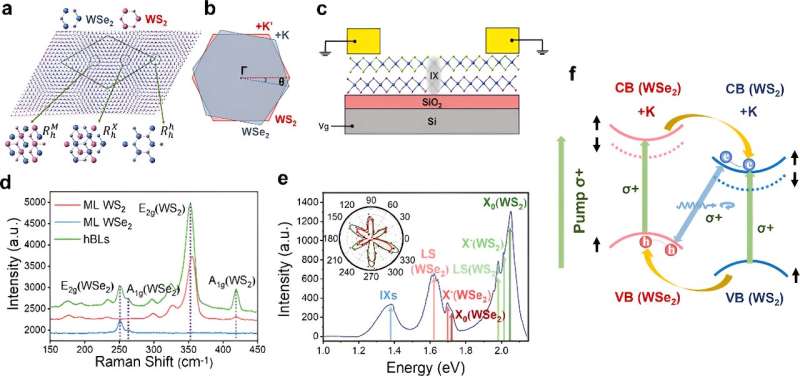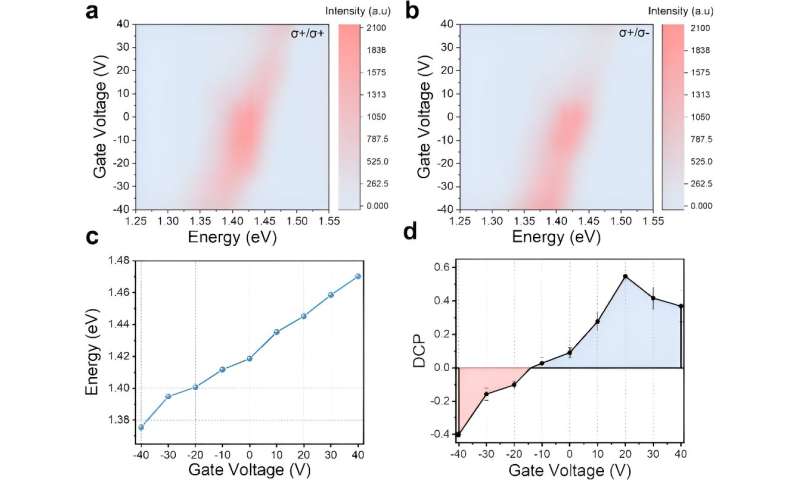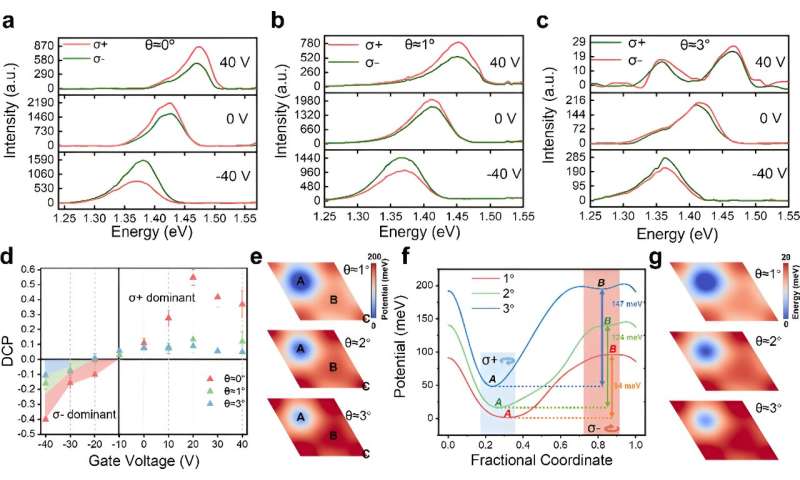This article has been reviewed according to Science X's editorial process and policies. Editors have highlighted the following attributes while ensuring the content's credibility:
fact-checked
peer-reviewed publication
trusted source
proofread
Twist-angle in moiré lattice controls valley polarization switching in heterostructures

In a study published in Science Advances, Prof. Wang Can from the Institute of Physics of the Chinese Academy of Sciences and Prof. Xu Xiulai of Peking University have demonstrated for the first time the dependence of valley polarization switching and polarization degree on the moiré period by twist engineering in electrically controlled transition metal dichalcogenide heterobilayers (hBLs).
Van der Waals (vdW) hBLs have attracted a lot of attention due to their electronic energy band structures and diverse physical properties for potential valley-based optoelectronic applications. The moiré pattern between different monolayers in vdW heterostructures naturally leads to a nanoscale periodic potential, which provides a unique opportunity to realize the next generation of valleytronic devices.
Twist engineering is a powerful tool to manipulate the valley degrees of freedom of interlayer excitons (IXs). It provides an additional freedom to control the excitonic potential, thereby improving the controllability of the valley properties. However, the twist angle-dependent control of the excitonic potential and valley polarization in electrically controlled heterostructures has not been investigated.
In this study, the researchers demonstrated that the valley polarization of IXs can be effectively controlled by adjusting the twist angle. Both the degree of circular polarization (DCP) and the polarization switching are electrically controlled in fabricated WSe2/WS2 heterostructure devices with different moiré periods determined by the twist angle.
-

Electrical control of the IXs in the device with θ≈0°. Credit: Science Advances -

Twist angle dependent polarization properties. Credit: Science Advances
The physical mechanisms of twist angle dependent DCP have been experimentally studied from both intralayer and interlayer perspectives. A lower interlayer excitonic potential at local minima caused by a larger moiré period leads to the confinement of more excitons, resulting in enhanced DCP.
In addition, an increase in intralayer electron-hole (e-h) exchange interactions at a large angle results in a decrease in the intralayer valley lifetime, and a reduced initial intralayer valley polarization, ultimately leading to a reduction in the interlayer valley polarization.
By considering the dependence of the excitonic potential difference on the moiré period, theoretical calculations based on first-principle theory show that the difference of the excitonic potential between two minima increases with the twist angle, leading to a higher external bias for devices with a larger twist angle to switch the polarization.
Based on this polarization switching, the researchers have also demonstrated a valley-addressable encoding device that provides a platform for future non-volatile memories.
More information: Danjie Dai et al, Twist angle–dependent valley polarization switching in heterostructures, Science Advances (2024). DOI: 10.1126/sciadv.ado1281
Journal information: Science Advances
Provided by Chinese Academy of Sciences





















